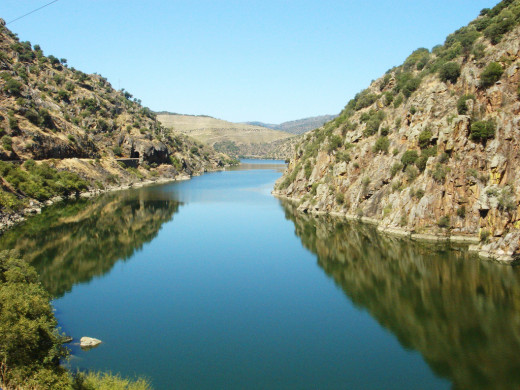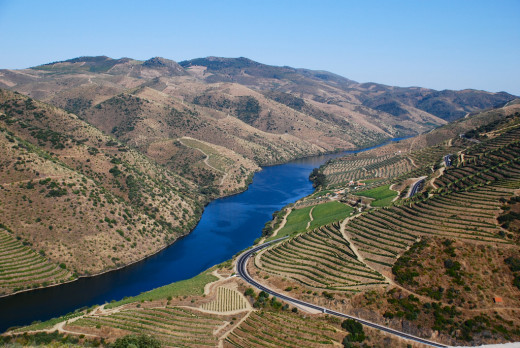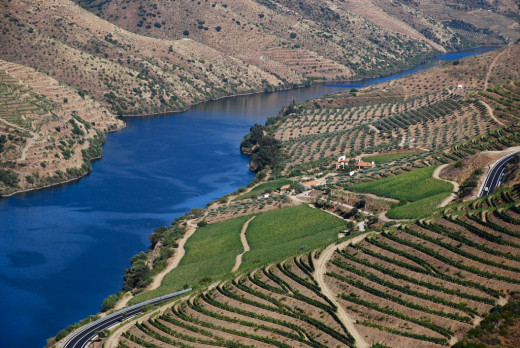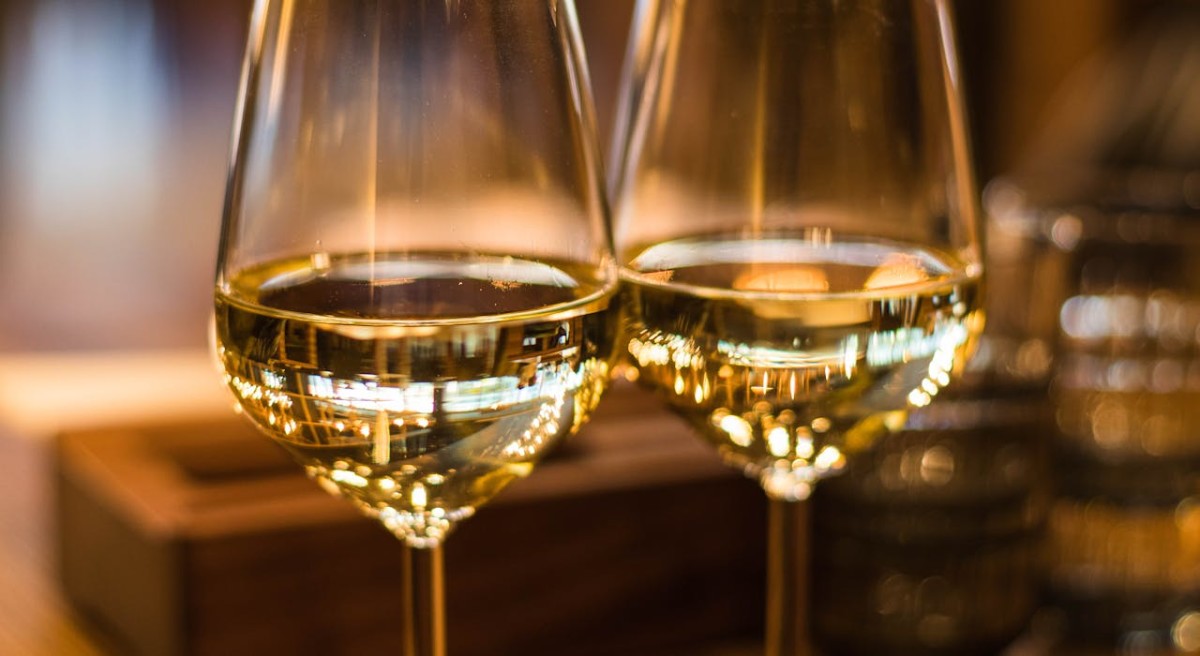Port Wine - A centuries-old tradition
The history of Port wine actually starts thousands of years ago, it starts with steep rocky hills, a river, the wind, the rain, the sun and the will of Men. Without all that, there would be no Port wine, after all Port wine is the result of the art of wine making, but also of the characteristics of the land and surroundings where the vines grow, where the grapes mature. And the land, the hills, the river are not gentle up there, actually it is nothing short of a miracle that it was possible to grow vines in the steep hills of Douro Valley - in Porto, north of Portugal - and that miracle rests in the hands of faceless men and women that worked the land tirelessly day after day until it bend to their will. So, Port wine it's not just wine, it is life, it is earth, it is strenght, it is after all Will.
Northern Portugal
The Douro Valley
The Douro Valley is part of the Northern Region of Portugal and it is located upstream from the city of Porto, sometimes referred to as Upper Douro. The Douro Valley surrounds the Douro River for the most part where it crosses Portugal to reach the Sea at Porto. It is characterized for its steep hills and rocky soils, making it hard to grow something. As far as the climate, the region is protected by mountain ranges, such as Marão and Montemuro, from coastal influence, helping to keep the climate hot and dry in the summer and cold in the winter.
The landscape of the region is breathtaking, overlooking the river we find terraced vineyards tumbling down towards the water, the schist and the soil intertwined, a conquest of men to the hills and the river.
Because of the richness of the landscape and the significance of the wine making culture and history, the Douro Valley region was declared a World Heritage Site in 2001.
Even before, but even more since the tourism in that region has multiplied. Visiting the Douro Valley allows not only to enjoy particularly rich and peaceful views, but also to enjoy the famous Port wine straight out of the cellars or even to help making it.



The wine throughout the centuries
There is archaeological evidence of wine making in the Douro Valley dating the Roman Empire and throughout the centuries wine making was always a tradition in the Douro Valley, but it wasn't until the 17th century that we first heard about the region's fortified wine - Port wine - and it is believed that before wine production was solely dedicated to regular table wines.
The production of Port wine seems to be the result of several factors, climate, land, will, but also history and culture, as well as political alliances. You see, since the 14th century Portugal had a political alliance with England, the terms of the alliance allowed for English merchants to establish their business in Portugal under the same conditions as Portuguese merchants - and the opposite was also true, later on during the 17th century the alliance was reasserted and many Englishmen established their business in Portugal, in cities such as Porto or Viana do Castelo, that were considered privileged places, namely because of its harbours that allowed for the shipping and arrival of various products.
When the French Minister, Colbert, added absurd taxes to the French wines that were extremely popular in England - and also because of the everlasting quarrels between the two countries - King Charles II of England, forbade the import of French wines. So, the English had to look elsewhere for wine.
Portugal was always a winemaking country, especially in the Douro Valley region - as mentioned before - and Portuguese wines were already being exported to England, at the same time, the ban of the French wine, the existing alliances and commerce terms agreed and also the fact that a lot of Englishmen were established in Portugal allowed for an increase in wine export, as well as the search for new wines, that appealed more to the English taste accustomed to the French wines.
It wasn't before long that big estates turned solely to wine production, but the wine table produced didn't quite appeal to English taste and also presented some problems because the wine spoiled during transport. So, at some point someone unknown thought of adding brandy (not the commercial kind) to the wine, thus more or less inventing Port wine as we know it today. The process of adding brandy is called fortification and that is why it is said that Port wine is a fortified wine. At first the brandy was added before transport, but the actual Port wine implies adding the brandy during the fermentation process and, in this case, timing is everything.
Here and there in the Douro Valley region old and new estates flourished with the sole purpose of making Port wine, some of the estates owned by Portuguese families, other by English families - after all much of the Port wine production was destined to England, so their position as intermediaries between the Portuguese and English markets was privileged - therefore it's not strange that many of the Port wine brands carry English names, such as Graham's, Taylor's and others, which stand side by side with Portuguese brands such as Porto Ferreira, Real Companhia Velha e Ramos Pinto.
Each estate has its own recipe for Port wine, which depends of the varieties of grapes used, but also the land and the climate and the influences around and the amount of brandy and the kind of oak pipes where the wine is stored, the aging process, well, actually there are so many variants that influence the final result, that each Port wine stands alone unlike any other, an individual flavour, a special touch and scent.
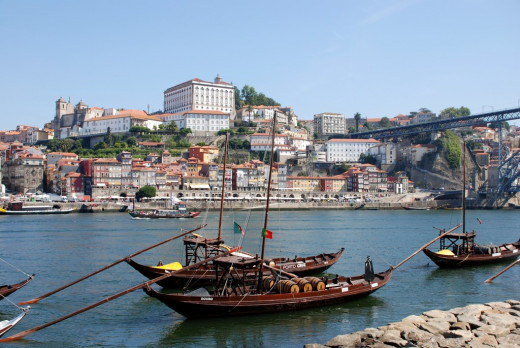
So it was somewhere in the second half of the 17th century we first heard of Port wine, as we know it today. Although Porto is not part of the Douro Valley region, the wine travelled down Douro River in a Rabelo Boat and was exported from Porto to all over the world. On both sides of the Douro River - in Porto and Vila Nova de Gaia - we see rows of Port wine warehouses. Probably because it was exported from Porto it became known as Port wine.
Now, although most of the wine production in the Douro Valley region had turned to Port wine by then, it does mean that table wine production was abandoned, it just wasn't that important and it was mainly destined for domestic consumption. It wasn't until the 20th century that Douro Valley table wine started being duly appreciated and is now, alongside Port wine, a distinguished, sought after product and again bears all the marks of time, culture and all the physical characteristics of a region.
But getting back to Port wine, there is another important feature to its history: after all the region of Port wine making is the first in the world to have a formal demarcation. the demarcation happened by a Royal charter dated the 1756 and defined formaly the production region for Port wine, which was extended later on. This demarcation was an effort by the Pombal Marquis, which was by then Minister, and intended to control the production, sales and exportation of the Port wine in an attempt to set rules and regulations that prevented certain practices that called into question the quality of the wine, such as adding elderberry to the wine for colour. It was the Marquis that was also responsible for the first classifications of the various Port wines that were being sold, allowing the best wines to receive credit for it and also to charge more in comparison to the other wines and finally having the possibility of being exported, while lower quality wines could not. These measures, unpopular at the time, raised the bar when it came to Port wine making and made the difference for the future and for what is now Port wine.
What is Port wine after all?
Port wine is a fortified red wine, it is velvety and comforting and sweet. The sweetness of the wine - more or less - depends when the brandy is added. It is also known for a ruby colour and a fruity flavour.
There are several types of Port, mainly the difference between them is the aging process, but there are also significant differences in taste depending on the varieties of grapes and when the brandy is added.
Port wines are classified in barrel-aged ports or bottle-aged ports, in the first case, as the name, shows, wine is aged in wooden barrels that allow a small exposure to oxygen, therefore losing colour and volume, which makes up for a wine more viscous, while in the second case aging occurs in sealed glass bottles, with no exposure to oxygen, this wine is smoother than the first and its colour more vivid.
Very briefly:
Barrel-aged ports are classified as Tawny, Colheita (harvest) and Garrafeira (cellaret) and can be sweet or medium dry, the discolouration due to the aging process turns it a golden-brown; a tawny is at least 2 years old when it reaches a table, although it can be much older also combining different vintages; colheita is a tawny but from just one vintage, which means that the age inscribed 10, 20 or 30 years is actually the age of that wine; garrafeira is a rare product from a single harvest that actually combines aging in barrels with aging in dark green demijohns glass.
Bottle-aged ports can be classified as Ruby (the most common), Vintage character (which is a premium ruby), the Rose port and the White port (which are more modern variations of Port wine), Late bottled vintage (destined to be a Vintage port but left in the barrel for too long), Crusted (which is a blend from several vintages), Vintage port (made exclusively from the grapes of a declared vintage year from a particular Port house) and finally Single quinta vintage port (made exclusively from the best grapes of a single estate from a particular Port house in a non vintage year).
Apart from all the classifications and vintage years, which I leave for the experts, the fact is that you don't have to be a connoisseur to appreciate a beautiful, velvety port wine.
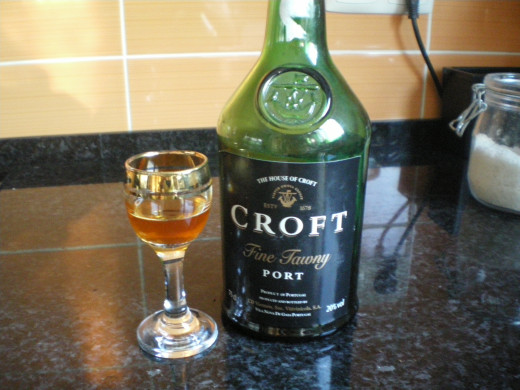
Are you really drinking Port wine?
From some years to this part wine producers a bit all over the world have tried to mimic the Port wine taste, which is fine as far as I am concerned. What is not fine is that some have used the name Port wine on their labels, which implies that what you are drinking is the actual thing, when it is not and it can never be the same, because Port wine is not just about grapes and people, it's about the rocky soil, the climate, the river and that can't be mimicked.
A lot of work has been done to stop that from happening and in fact some countries have now accepted not to allow in the future their national producers to call Port wine to the wine they are producing, although the wines that are being produced with that labelling presently continue to carry such name, which is in my view wrong for many, many reasons. It is, to say the least, ironic that the first demarcated wine production region in the world is having to defend a centuries-old brand, which was established and is protected for so many years, just to make sure people realize they actually know what Port wine is, because what it is, is also where it comes from.
So, when you drink your next Port, make sure you are drinking the real thing!
Have you ever tried Port wine?
Feedback
Don’t forget to leave me your comment and vote on the hub.
For more information check out my profile and stop by my other hubs.
And if you enjoyed, maybe you can also join us here at Hubpages, it’s fun and free and you can click here.
© Copyright Aug 30 2012 / Algarveview.hubpages.com. To use part or the whole article you must first get written permission from the author. Feel free, nonetheless, to use an intro of the hub with a link to the article here on hubpages for the rest of the article.
© 2012 Joana e Bruno

